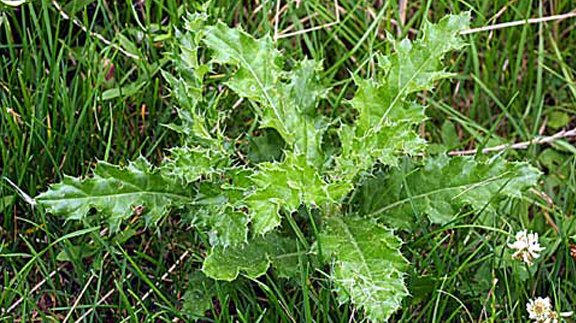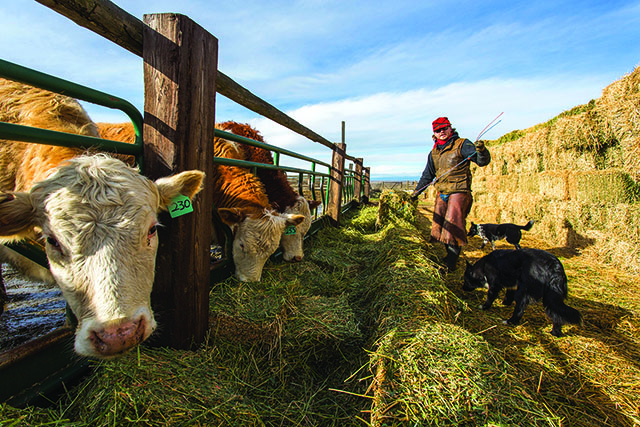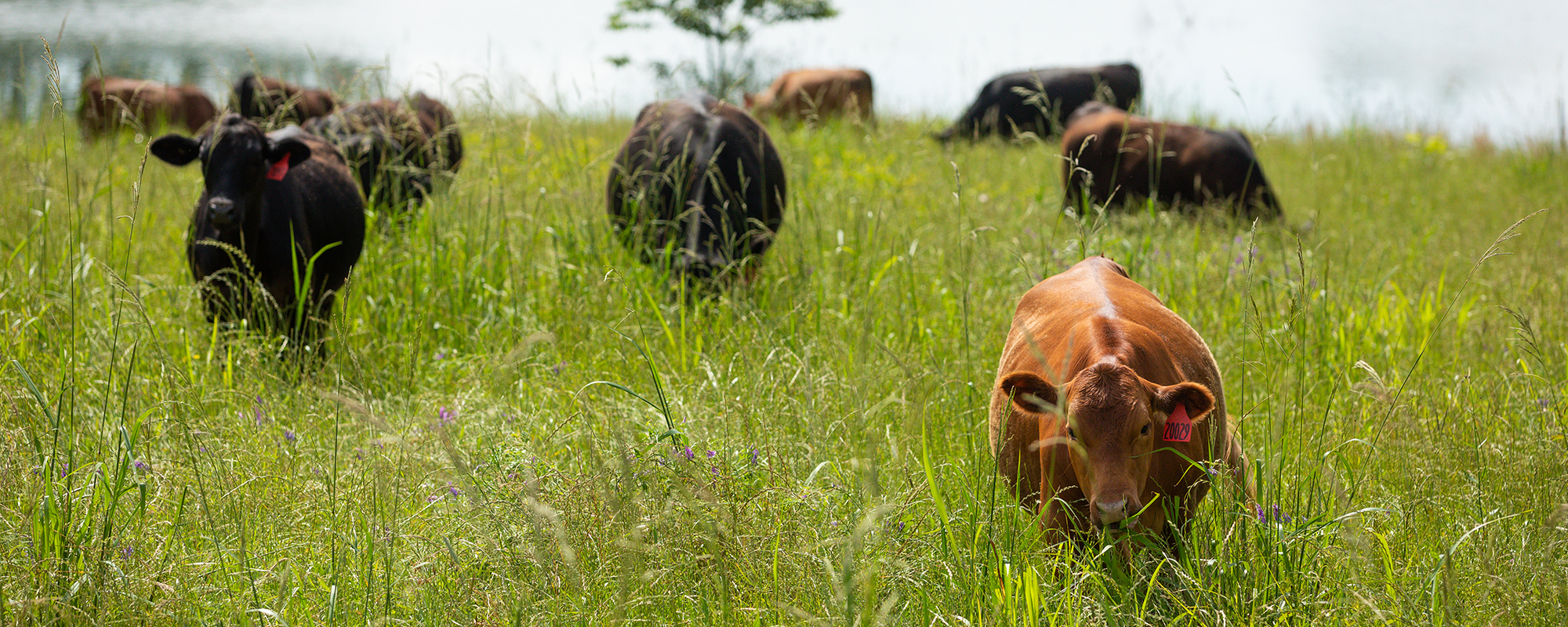HOME
[AgriLife] Wet 2015 could lead to a weedy 2016

AgriLife Extension agronomist advising producers to start early on weed control
Writer: Kay Ledbetter, 806-677-5608, [email protected]
Contact: Dr. Jourdan Bell, 806-677-5600, [email protected]
AMARILLO – The blessing of a wet 2015 is expected to bring the curse of a weedy 2016, said Dr. Jourdan Bell, Texas A&M AgriLife Extension Service agronomist in Amarillo.
The above average precipitation in 2015 prompted the growth of weeds and where those weeds were not controlled, they produced seeds that will germinate and likely result in heavy weed pressure this spring and summer, Bell said.
“We need to be proactive about weed control this year,” she said. “Weeds rob inputs – water and nutrients – from your soil that would otherwise be available for your primary crop. So we advise you to start clean and stay clean.”
Bell said there were many good tank-mix options in last year’s corn and sorghum herbicide trials near Bushland that provided very good control. The trials demonstrate that good coverage is important for both pre- and post-emergent herbicides.
For corn herbicides, treatments were applied at a rate of 15 gallons per acre, and for sorghum herbicides, applications were made at a rate of 10 gallons per acre, she said. Both corn and sorghum herbicide plots were sprayed with flat-pan nozzles.
“You really want to make sure the herbicide is getting where it needs to be,” Bell said.
Soil type can also play a role in the efficacy of the various chemicals, she said.
“For example, we found very good control and no crop injury with Lumax applied as a pre-emergent in grain sorghum, but we are on a clay loam soil. On a coarse soil with low organic matter, this would not be recommended.”
In corn, there are many effective options for weed control, Bell said. However, the vast number of options can often be overwhelming.
“Producers don’t call only about one chemical; they are often inquiring about tank-mix options, potential application costs, timing of application and even rotational concerns,” she said.
“In our corn herbicide trials at Bushland, we had the opportunity to evaluate products from AMVAC, Bayer, DuPont, Dow, FMC and Syngenta,” Bell said. “These trials provide us an opportunity to evaluate herbicide performance and efficacy under regional conditions. We evaluated some very intensive herbicide programs as well as some simpler options.”
She said on limited tillage acreage, producers are aware of the importance of a solid herbicide program, and they are ready to adopt an intensive herbicide program. However, on tilled acreage, producers often have different concerns.
“While there is not just one solution for a successful herbicide program in the High Plains, a successful program generally includes herbicides with residual activities in addition to postemergence herbicides with several modes of action,” Bell said. “Having several modes of action along with good coverage allows producers to be more proactive against herbicide-resistant weeds.”
The price of chemical and application can vary widely, so she advised producers to make sure they target their treatments to get the most bang for their buck, she said. This includes the application rate as well as proper adjuvants to enhance herbicide activity.
“To avoid crop injury, it is always recommended producers read labels and follow application guidelines, including rotational restrictions, to avoid potential crop injury,” Bell said.
Another important consideration is the activation requirement of soil-applied herbicides, she said. Some chemicals need to be activated with a half-inch rain or irrigation, but the exact amount of water needed is a function of the herbicide’s water solubility.
“While this is not a problem on irrigated acres, this can be a problem on dryland acres if precipitation is not received in a timely manner,” Bell said.
“With lower commodity prices, many producers try to cut herbicide costs,” she said. “But, it is important to remember that the weeds can rob resources from your crop and in turn hurt yields.”
As producers evaluate their inputs, it is important they consider cost-effective herbicide options rather than doing nothing, Bell said.
“Neglecting weeds in 2016 will magnify weed problems for years to come. Start clean, get a handle on the weeds before they get out of control.”
-30-
HOME
Farm and Ranch Injuries

By Barry Whitworth, DVM
In January, I attended the Oklahoma Veterinary Conference. While waiting for one of the sessions to start, a classmate of mine commented how many of the attendees walk with a limp, used a cane, and/or have damaged hands. We all agreed that working with animals is hard on the body. In general, anything associated with farming and ranching is dangerous.
Most farmers and ranchers know that agriculture is a dangerous occupation. According to United States Bureau of Statistics, workers involved in agriculture, forestry, and fishing had the highest occupational fatality rate in 2022. The fatality rate of 23.5 per 100,000 full-time equivalent (FTE) workers for this group is much higher when compared to the overall occupation fatality rate of 3.7 per 100,000 FTE. Most of the agriculture-related fatalities are associated with transportation, such as tractor overturns, and vehicle crashes, but a fair number involve livestock.
To read more, pick up a copy of the March issue of NTFR magazine. To subscribe by mail, call 940-872-5922.
HOME
Jesses Jewelz

By Jesse Kader
Comfy and keep it western. That’s the name of the game this month. It’s hot and who wants clingy clothing? This jumpsuit is perfectly comfortable and relaxed without forfeiting the fashion. Dress it up or keep it casual. See this and more at www.jessesjewelz.com.
HOME
Noble Research Institute Expands New Program Offering Farmers and Ranchers the Essentials of Regenerative Ranch Management

The educational program has been expanded to three new locations, empowering ranchers and farmers to monitor and improve the health of their land, livestock and livelihood through regenerative principles.
ARDMORE, OK–September 12, 2023 – Noble Research Institute announced the expansion of Essentials of Regenerative Ranching, a new educational program designed to help ranchers enhance and restore the land, making it more resilient and reaching livestock grazing goals through regenerative management. Essentials of Regenerative Ranching provides producers with practical tools, hands-on experience and guidance to make data-driven decisions to decrease costs and improve profit.
The Essentials of Regenerative Ranching course has been expanded to three new locations in Texas and Oklahoma. Registration is open now at www.noble.org/essentials. Seating is limited, so early registration is recommended.
Texas A&M
College Station, Texas
October 17 – 18
O.D. Butler, Jr. Animal Science Complex
Noble Research Institute
Ardmore, Oklahoma
October 31 – November 1
Pavilion Center
Texas A&M
Kingsville, Texas
November 7-8
Caesar Kleberg Wildlife Center
“Program participants gain working knowledge and experience of monitoring and improving the health of their soil, grazing livestock more strategically and making informed financial decisions,” said Hugh Aljoe, Noble Research Institute’s director of ranches, outreach and partnerships. “We use a mix of classroom and field work to send producers home with the tools they need to begin making changes on their ranch.”
Farmers and ranchers navigate uncertainty from weather, fluctuating market prices and escalating costs of inputs. Many producers are seeking new tools that offer greater control and reduce their operational uncertainty. Through this course, ranchers and farmers will calculate their financial situations, determine initial stocking rates, carrying capacity and grazing goals.
“The course is well-suited for ranchers of all experience levels and all types and sizes of operations,” Aljoe added. “No matter your situation, this program will transform the way you think about your ranch.”
The Essentials of Regenerative Ranching program allows producers to overcome obstacles, become more informed problem-solvers and increase the productivity of their grazing lands. By participating in this program, ranchers join a community of like-minded producers who are shaping the future of ranching and leaving a lasting impact on their land and families. “If I had known what I learned in this course when I started my regenerative journey, I could have avoided some key mistakes,” said Tana McCarter, a rancher, and Essentials attendee. “I left with the tools I needed to monitor my soil health and financial progress. I’ll now have the right data to make informed decisions on how to meet my regenerative goals.”
Noble Research Institute is an independent nonprofit agricultural research organization dedicated to guiding farmers and ranchers in applying regenerative principles that yield healthier soil, more productive grazing land, and business success.
At Noble, researchers, facilitators and ranch staff work together to share with farmers and ranchers the skills and tools to regenerate the land in a profitable manner. Noble is focused on the regenerative management of the nation’s grazing acres, which directly impacts pasture and range environments, wildlife, pecan production, and livestock production. Regenerative management recognizes that each decision made on the ranch impacts the interactions of the soil, plants, water, animals, economics and people. Noble’s 14,000 acres of working ranch lands provide a living laboratory on which to demonstrate and practice regenerative principles and ideas to deliver value to farmers and ranchers across the U.S.
-

 Country Lifestyles1 year ago
Country Lifestyles1 year agoScott & Stacey Schumacher: A Growth Mindset
-

 Equine7 months ago
Equine7 months agoThe Will to Win
-

 Country Lifestyles7 years ago
Country Lifestyles7 years agoStyle Your Profile – What your style cowboy hat says about you and new trends in 2017
-

 Country Lifestyles4 years ago
Country Lifestyles4 years agoAmber Crawford, Breakaway Roper
-

 HOME7 years ago
HOME7 years agoGrazing North Texas – Wilman Lovegrass
-

 Country Lifestyles7 years ago
Country Lifestyles7 years agoDecember 2016 Profile, Rusty Riddle – The Riddle Way
-

 Country Lifestyles8 years ago
Country Lifestyles8 years agoJune 2016 Profile – The man behind the mic: Bob Tallman
-

 Country Lifestyles8 years ago
Country Lifestyles8 years agoCowboy Culture with Clay Reid – Being a Man






